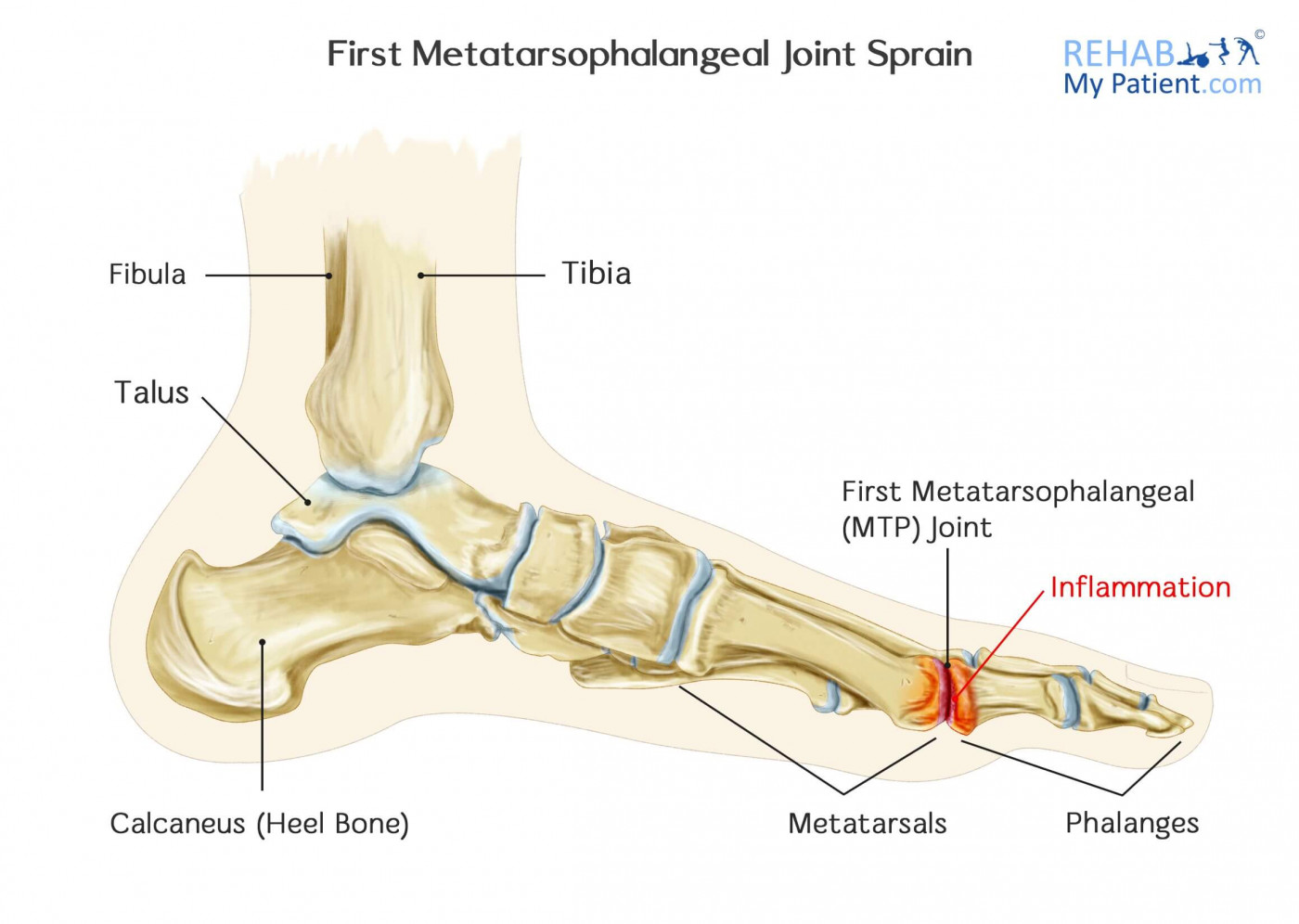
The simplest definition of this condition is referred to a sprain of the main joint of the big toe. It happens whenever the toe ends up being bent up forcibly into hyperextension or hyperflexion. An example is when an individual is pushing off in a sprint and has the toe end up being stuck flat to the ground.
Sprains of the big toe joint are extremely prevalent in football players because of the increasing popularity of artificial turf on the fields, which is where the name turf toe came into play. Artificial turf is a lot harder than grass and it doesn’t have a tremendous amount of give whenever forces are placed onto it. Even though it is often attributed to football, turf toe can occur in any number of activities and sports. There is also the risk of the big toe being stepped or stamped on, which can also cause an injury to the first MTP.
First Metatarsophalangeal (MTP) Joint Sprain Anatomy
Two joints make up the big toe. The larger of the two joints is the metatarsophalangeal joint (MTP), which is where the first long bone within the foot (metatarsal) meets the first bone of the toe (phalanx). When it comes to turf toe, the MTP joint is the one that gets injured.
Typically ligaments around the MTP can become sprained, and the joint surface can be inflamed. Ligament injuries such as this can take around 6-12 weeks to heal depending on the severity of the sprain.

How to Treat a First Metatarsophalangeal (MTP) Joint Sprain:
- Rest
Refrain from participating in any activities that might have caused the injury. Avoid placing weight and walking on the foot to allow it time to heal properly.
- Ice
Use an ice pack for five to 10 minutes at a time, three to five times per day. Avoid applying ice directly to the skin, but instead, wrap it in a towel.
- Anti-Inflammatory Medication
An over-the-counter anti-inflammatory medication, such as naproxen or ibuprofen, can provide you with relief from some of the symptoms. The medication can help to alleviate some of the pain and swelling that you are currently dealing with for your condition. Only use this for the short term and only under guidance of your doctor.
- Compression
Even though swelling might occur initially, you can take measures to help minimize the amount of swelling you are dealing with at the time. To prevent any additional swelling, try wearing an elastic bandage to help keep the injury to a minimum.
- Elevation
To help reduce the amount of swelling in the joint, recline back when you relax. Place your leg higher than your heart to help alleviate some of the blood flow to the area and alleviate some of the swelling and pain.
- Physical Therapy
Physical therapy can help and should be started as soon as you are able to. Specific exercises can help to strengthen and stretch the big toe. Early movement of the joint is imperative for being able to reduce and prevent any stiffness in the joint. There are also a number if exercises you can do to passively and actively mobilize your big toe. These are important for preventing stiffness. There are also strengthening exercises you can do using an exercise band. Ask your therapist for advice on this.
Tips:
- When a turf toe injury is addressed quickly, they tend to heal extremely well.
- A variety of different symptoms ranging from mild to moderate, such as stiffness and pain in the joints, tend to be the most common of all complications.
- Common long-term complications include bunions, stiffness, minimal strength for pushing off and cocking up of the big toe.
- Any activity where the forefoot is fixed to the ground with the heel raised can push the big toe into hyperextension.
- When the athlete has less stability on the field, injuries tend to be more common.
Sign UP
Sign up for your free trial now!
Get started with Rehab My Patient today and revolutionize your exercise prescription process for effective rehabilitation.
Start Your 14-Day Free Trial